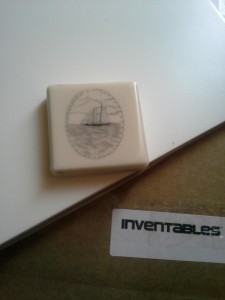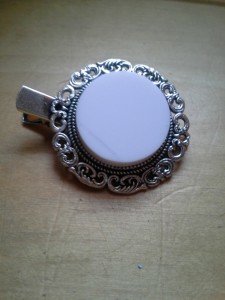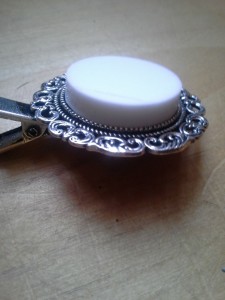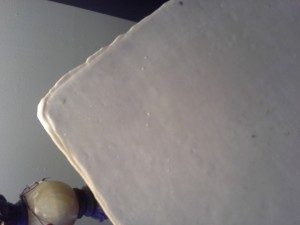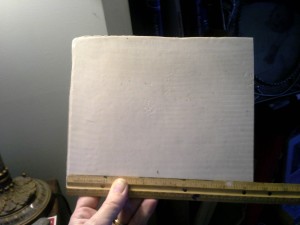 There are many things you can scrimshaw that your customers would cherish but the three perennial patterns in the world of scrimshaw: the ship, the lighthouse and the whale will be asked for again and again. For some like me, the lighthouse can be the greatest challenge with it’s symmetry and straight lines, while others find the clouds or the ocean with it’s many moods the most daunting. Still others find themselves caught up in the rigging like a shanghaied landlubber, overwhelmed by the many tenuous supports that keep the masts and sails aloft. Inevitably a request will come for your most challenging subject, so what can you do?
There are many things you can scrimshaw that your customers would cherish but the three perennial patterns in the world of scrimshaw: the ship, the lighthouse and the whale will be asked for again and again. For some like me, the lighthouse can be the greatest challenge with it’s symmetry and straight lines, while others find the clouds or the ocean with it’s many moods the most daunting. Still others find themselves caught up in the rigging like a shanghaied landlubber, overwhelmed by the many tenuous supports that keep the masts and sails aloft. Inevitably a request will come for your most challenging subject, so what can you do?
 Practice, practice, practice. Not obsessively, but consistently – a drawing or a sketch every day – even a doodle-a-day, then move on to other things. By incorporating this into your day you will be creating a small habit, a commitment to taking the time, how ever short to practicing and enhancing your art. I’m reticent to say “perfect” since that is not achievable as my inner critic is always quick to point out, but you also never reach the sun when you walk to the sunset.
Practice, practice, practice. Not obsessively, but consistently – a drawing or a sketch every day – even a doodle-a-day, then move on to other things. By incorporating this into your day you will be creating a small habit, a commitment to taking the time, how ever short to practicing and enhancing your art. I’m reticent to say “perfect” since that is not achievable as my inner critic is always quick to point out, but you also never reach the sun when you walk to the sunset.
 Your subconscious will pick up subtle nuances and techniques that will allow you to master your subject if you keep at it and find at least one good point in every sketch you make. Keep them in a scrapbook if you can, not to look at this week or this month, but perhaps next month over a morning coffee to see how you’ve progressed. You will be surprised I’m sure at the difference five or more weeks of small consistent efforts will make.
Your subconscious will pick up subtle nuances and techniques that will allow you to master your subject if you keep at it and find at least one good point in every sketch you make. Keep them in a scrapbook if you can, not to look at this week or this month, but perhaps next month over a morning coffee to see how you’ve progressed. You will be surprised I’m sure at the difference five or more weeks of small consistent efforts will make.
I’m setting aside fifteen minutes to draw one lighthouse per day for the next thirty days. By day 15 I’ll be cursing the small landlocked lighthouse I see on my way to work and by day 30 I’m sure I’ll be rejoicing in triumph, choosing another subject several times during this small challenge.

or Audible
)

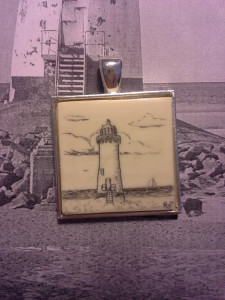
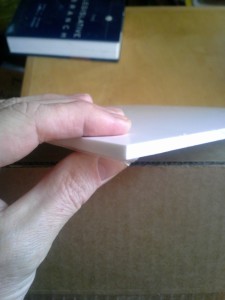
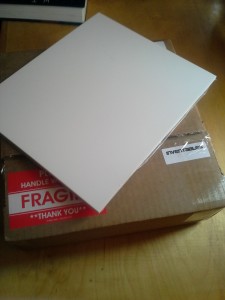 Some of the joys of living rural include having bear, moose and coyote traipse through your yard and sample your garden, send the dog into chaotic spasms of barking and howling and having neighbors farther away from you than you can throw a rock (unless you sneak up on them). The downside is unless you know what delivery service your vendor is going to use and the exact address they have for you in their database, your material can come maddeningly close to your house only to get shipped back halfway across the United States. This is what almost happened to the corian (pronounced “CORE-ian”). If you use the people in the brown trucks you need to be sure the street address starts with “S.” and not “South”. If it’s the people with the eagle on their shoulder, it’s another matter altogether. Fortunately our USPS employees are friendly and helpful, and held the package for me as I raced down to pick it up.
Some of the joys of living rural include having bear, moose and coyote traipse through your yard and sample your garden, send the dog into chaotic spasms of barking and howling and having neighbors farther away from you than you can throw a rock (unless you sneak up on them). The downside is unless you know what delivery service your vendor is going to use and the exact address they have for you in their database, your material can come maddeningly close to your house only to get shipped back halfway across the United States. This is what almost happened to the corian (pronounced “CORE-ian”). If you use the people in the brown trucks you need to be sure the street address starts with “S.” and not “South”. If it’s the people with the eagle on their shoulder, it’s another matter altogether. Fortunately our USPS employees are friendly and helpful, and held the package for me as I raced down to pick it up.